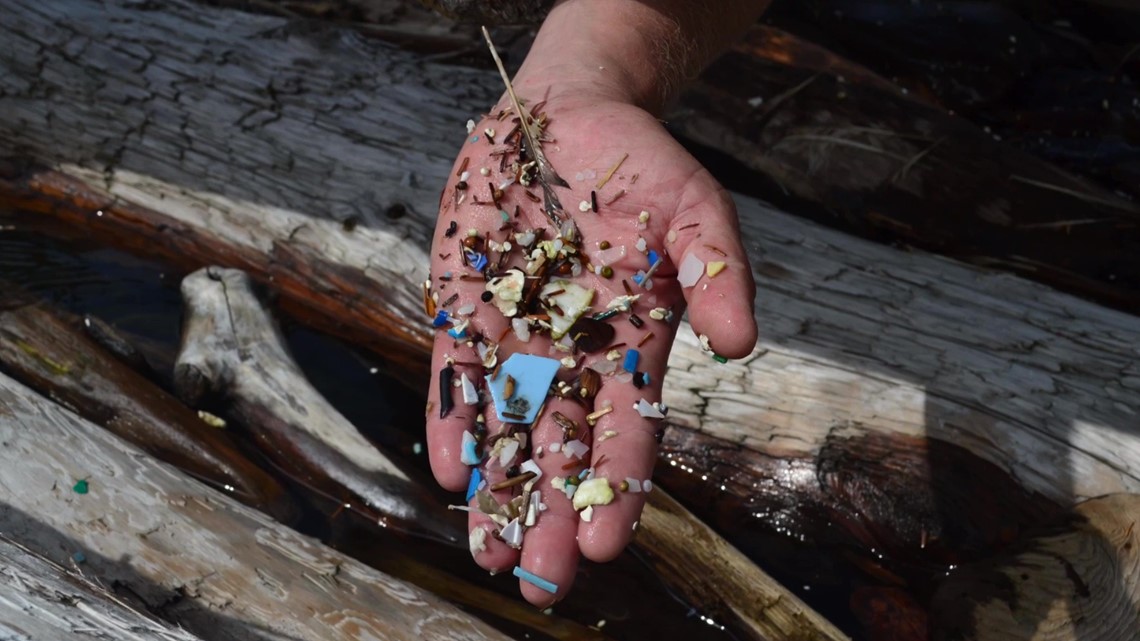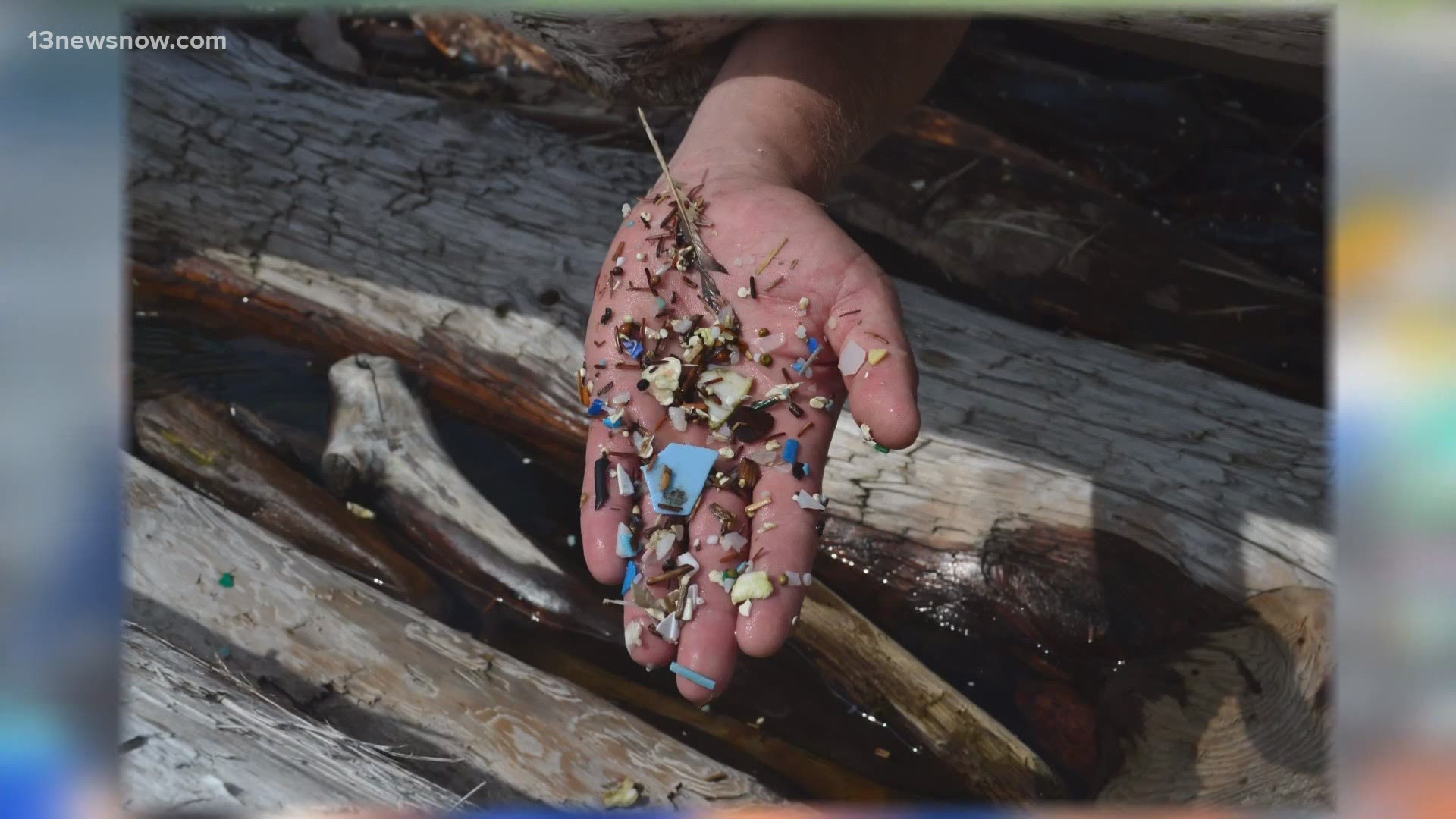NORFOLK, Va. — The Chesapeake Bay is a treasure. Its miles and miles of shoreline remind us we are Tidewater. The Bay welcomes us home. It's an economic driver for our region and it's also a vulnerable and sophisticated ecosystem being threatened by plastic.
Along a small stretch of shoreline in Portsmouth, we found a smorgasbord of trash.
"You can see everything from water bottles to plastic bags," said Chris Moore with the Chesapeake Bay Foundation. We found a sneaker, dozens of construction hard hats, even a traffic drum. Every bit of trash we saw as we walked the shoreline was the ugly side of our reliance on plastics.
"What we're seeing is only a very small part of the problem," Moore told us.
The bigger problem is some of these larger plastic objects will break down here in the hot sun. Some of the trash will end up back in the bay to be torn apart by tides, forming microplastics.
The tiny specks of plastic -- some invisible to the naked eye -- pose a significant risk to a host of juvenile finfish found in the Chesapeake Bay. There are concerns that oysters and clams may be trying to filter microplastics and cannot.
Microplastic contamination is not just a concern for the environment. A 2016 study showed the commercial seafood industry in Virginia and Maryland contributed $1.4 billion in sales and 30,000 jobs to the local economy.
"Education is so important, making sure things don't blow into our waterways, don't blow into our storm system. Unfortunately, when they do, they end up in places like this," Moore said.
Meredith Evans Seeley is an expert in microplastics with the Virginia Institute of Marine Sciences.
"I think what we know is that they're everywhere," Evans Seeley told us, adding the contaminant is persistent in the environment. "They may change in shape and become smaller and fragment a bit over time but for the most part, they're here to stay, and what's more concerning their sources are not decreasing," Evans Seeley says.


Microplastic contamination first showed up in the Chesapeake Bay 10 years ago, and scientists say it may take another decade to know for sure the full impact on the creatures who live in the Bay, perhaps even on you and me.
"We don't really know how it works its way up the food chain. Mainly the pieces of plastic that are most likely to make it up the food chain are really tiny," Evans Seeley said.
The Chesapeake Bay Foundation says it has yet to study the amount of plastics in the Bay. All of the trash on our shorelines and in our waters once belonged to someone who lost it, tossed it, or simply wasn't careful enough.
The pandemic has created another challenge; all of these masks we wear are a potential source of microplastics.
New technologies are being developed to better catch plastics before they end up here, and local researchers are working on things like more environmentally-friendly gunshot shells.
But for now, if we don't want plastics in birds and fish, much of that is on us.

